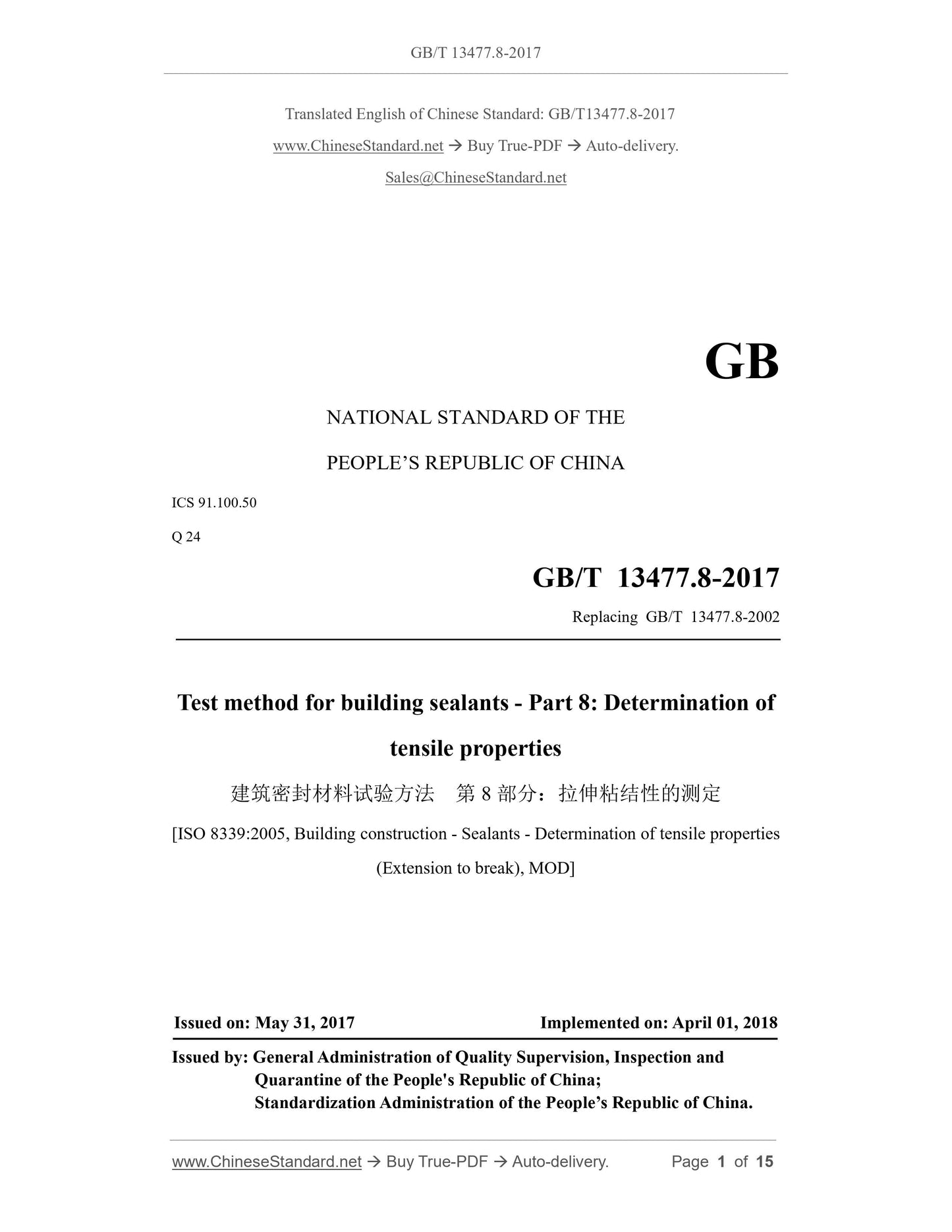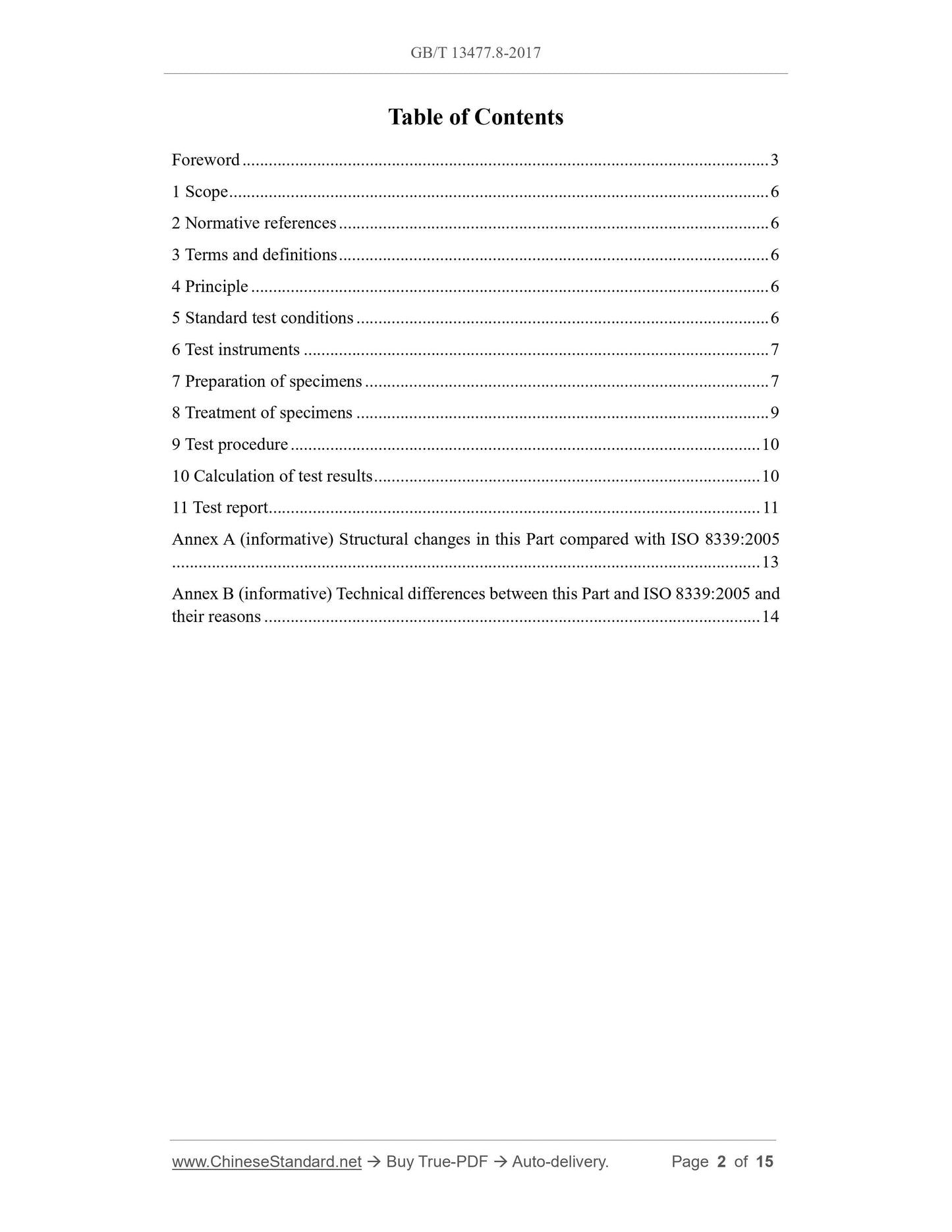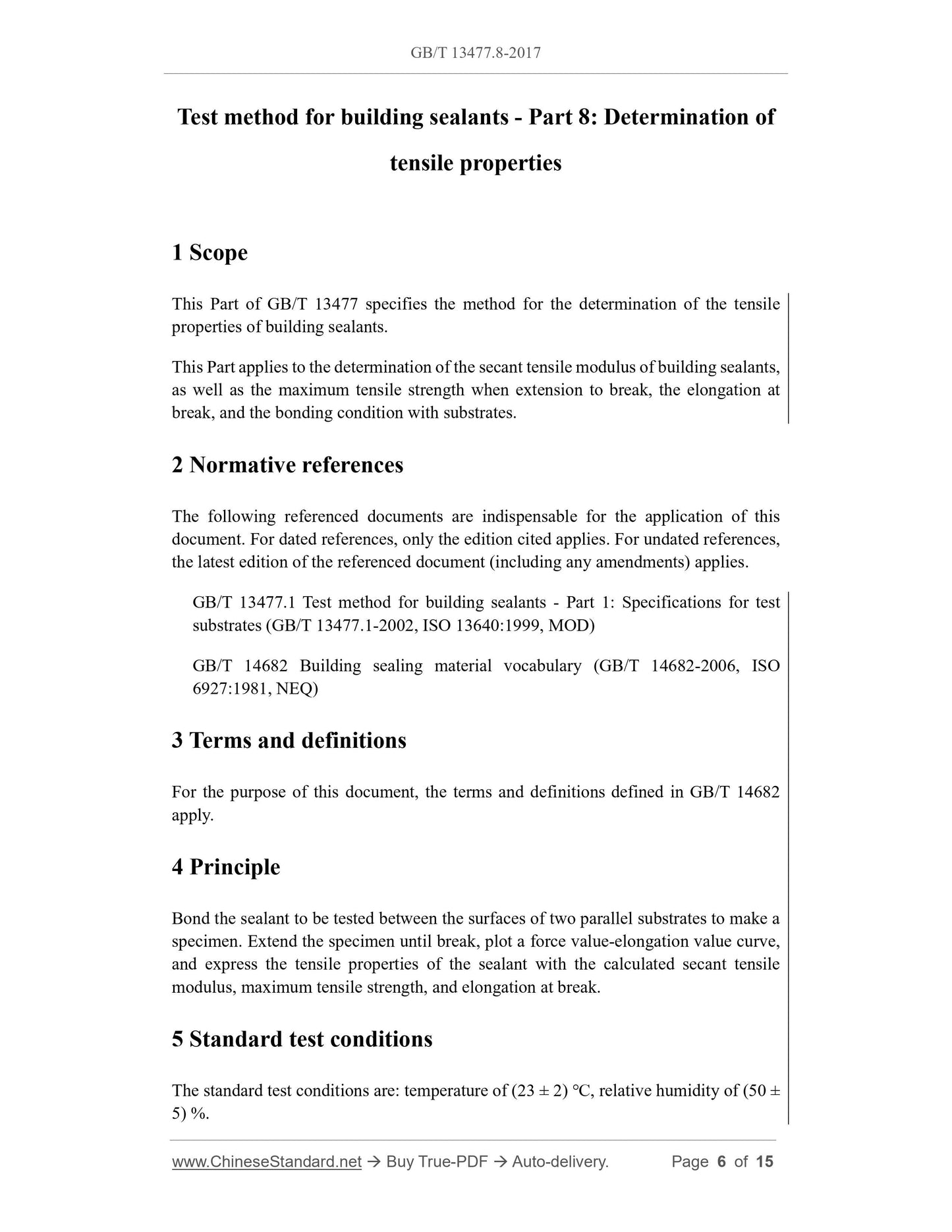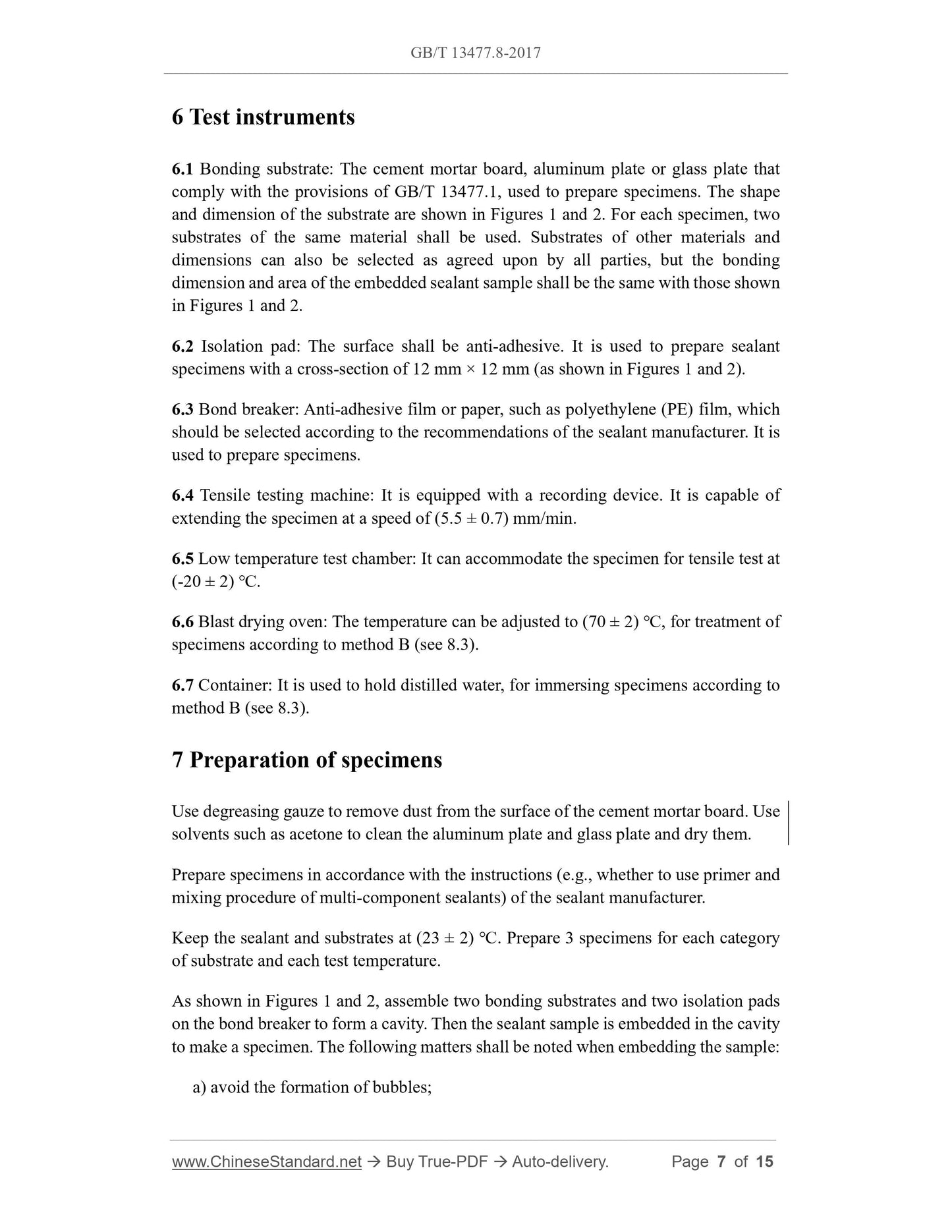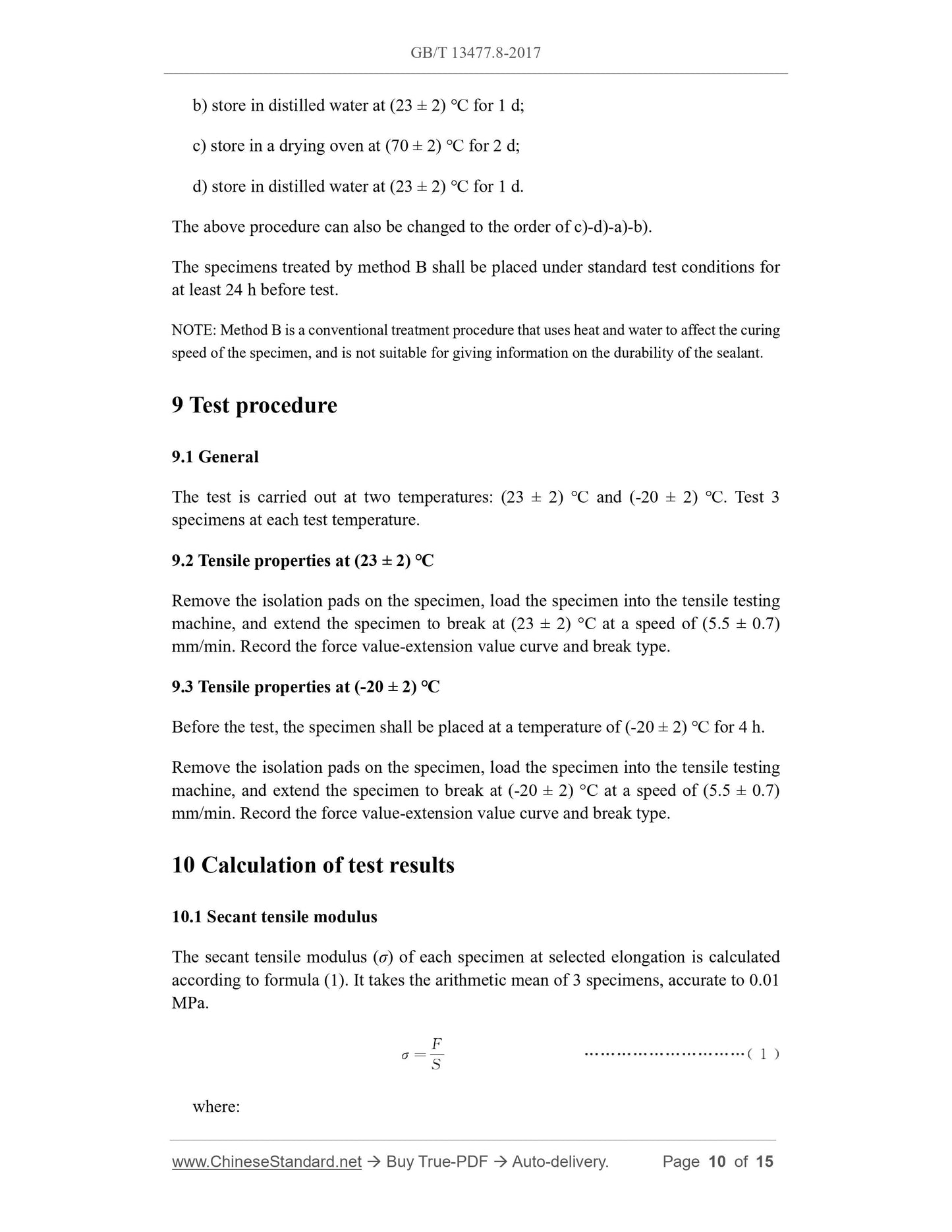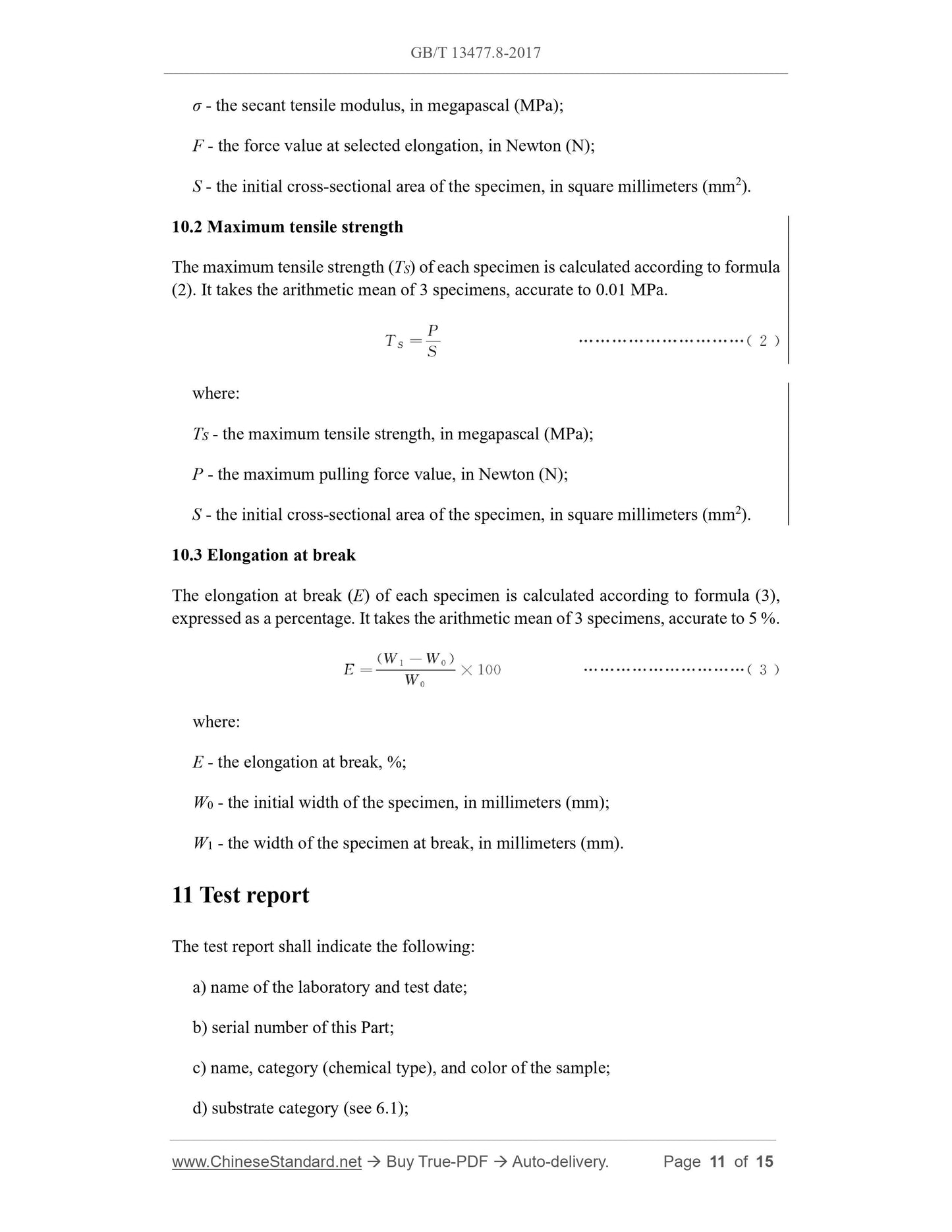1
/
of
6
www.ChineseStandard.us -- Field Test Asia Pte. Ltd.
GB/T 13477.8-2017 English PDF (GB/T13477.8-2017)
GB/T 13477.8-2017 English PDF (GB/T13477.8-2017)
Regular price
$165.00
Regular price
Sale price
$165.00
Unit price
/
per
Shipping calculated at checkout.
Couldn't load pickup availability
GB/T 13477.8-2017: Test method for building sealants -- Part 8: Determination of tensile properties
Delivery: 9 seconds. Download (and Email) true-PDF + Invoice.Get Quotation: Click GB/T 13477.8-2017 (Self-service in 1-minute)
Newer / historical versions: GB/T 13477.8-2017
Preview True-PDF
Scope
This Part of GB/T 13477 specifies the method for the determination of the tensileproperties of building sealants.
This Part applies to the determination of the secant tensile modulus of building sealants,
as well as the maximum tensile strength when extension to break, the elongation at
break, and the bonding condition with substrates.
Basic Data
| Standard ID | GB/T 13477.8-2017 (GB/T13477.8-2017) |
| Description (Translated English) | Test method for building sealants -- Part 8: Determination of tensile properties |
| Sector / Industry | National Standard (Recommended) |
| Classification of Chinese Standard | Q24 |
| Classification of International Standard | 91.100.50 |
| Word Count Estimation | 10,185 |
| Date of Issue | 2017-05-31 |
| Date of Implementation | 2018-04-01 |
| Older Standard (superseded by this standard) | GB/T 13477.8-2002 |
| Quoted Standard | GB/T 13477.1; GB/T 14682 |
| Adopted Standard | ISO 8339-2005, MOD |
| Issuing agency(ies) | General Administration of Quality Supervision, Inspection and Quarantine of the People's Republic of China, Standardization Administration of the People's Republic of China |
| Summary | This standard specifies the method of determining the tensile bondability of building sealants. This standard is applicable to the determination of the tensile modulus of the building sealing material and the maximum tensile strength, elongation at break and the bonding of the substrate during stretching to failure. |
Share
